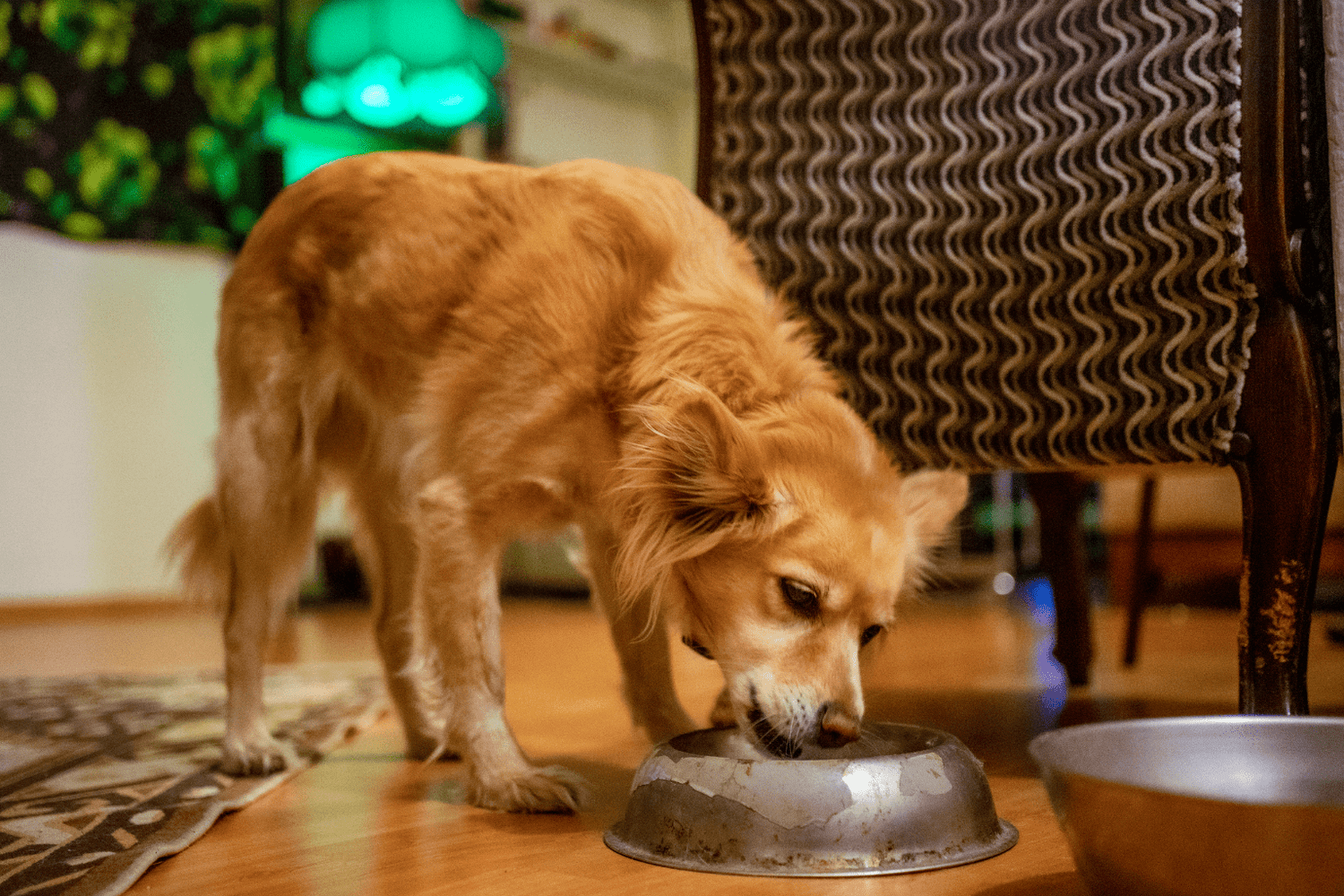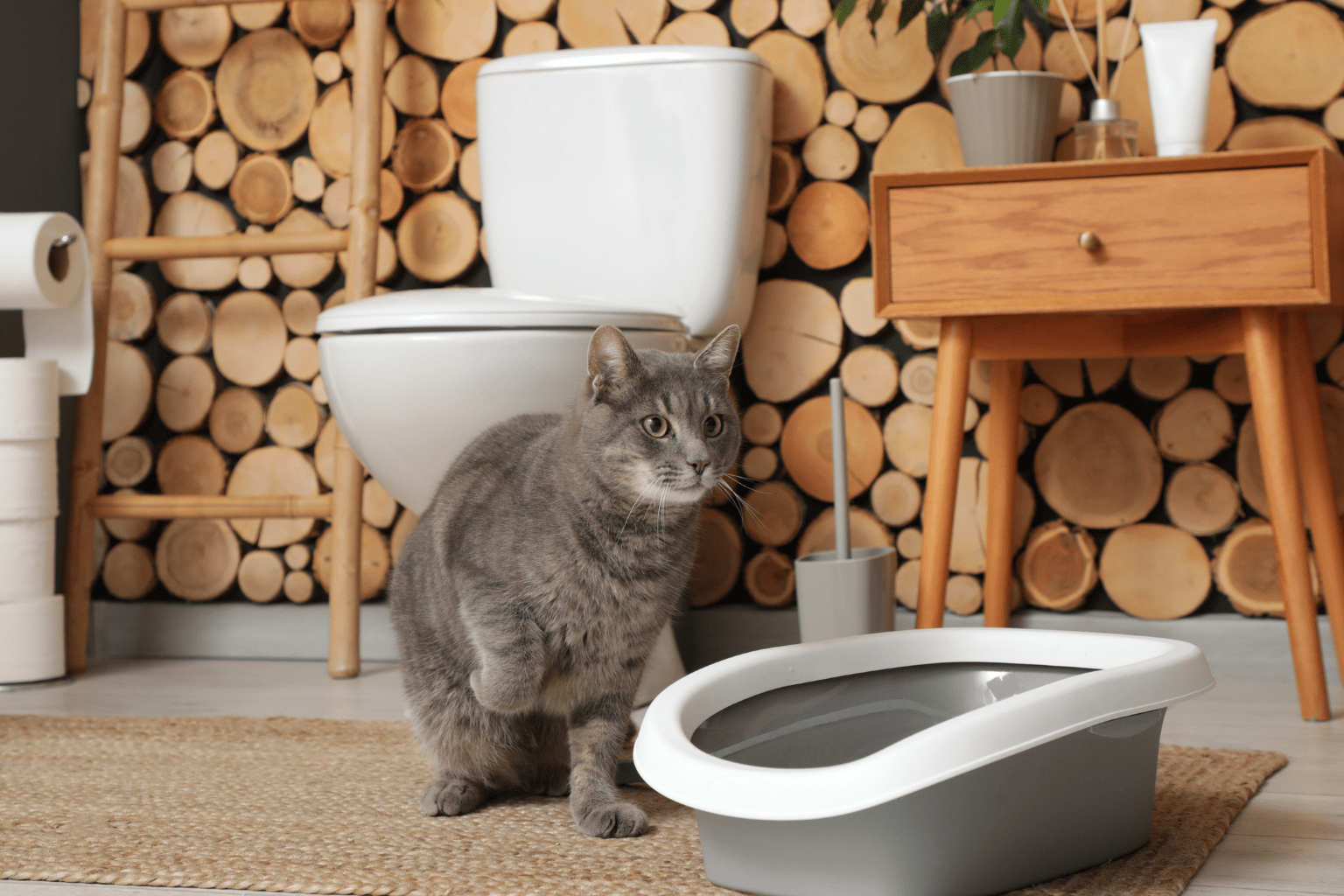Key Takeaways
- The best grains for dogs include brown rice, oats, barley, sorghum, and quinoa.
- These whole grains offer digestible fiber, B vitamins, and steady energy for dogs.
- Brown rice is ideal for dogs with sensitive stomachs.
- Oats promote healthy coat condition in dogs.
- Barley helps support a dog's immune system.
Table of Contents
- Why Grains Matter in a Dog's Diet, Cutting Through Confusion
- Top 5 Best Grains for Dogs, What Sets Them Apart
- Grain-Inclusive vs. Grain-Free: Choosing What's Best for Your Pet
- How to Choose the Right Grains for Your Dog (and Use Them Safely)
- Solving Common Grain-Related Problems (Digestive Issues & Allergies)
- Best Grains for Dogs With Special Needs
- Incorporating Grains Into Your Dog's Diet: Step-by-Step Guide
- The BestLife4Pets Approach, Nurture with Nature for Every Meal
- FAQs, Your Top Grain Questions, Answered
- Final Recommendations: Choosing Your Dog's Ideal Grains
The Best Grains for Dogs: Real Answers for Healthier, Happier Pets
Why Grains Matter in a Dog's Diet, Cutting Through Confusion
Despite grain-free marketing buzz, most dogs actually digest grains beautifully. Through thousands of years alongside humans, our pets developed the enzymes needed to break down complex carbohydrates, something their wild ancestors couldn't do as efficiently. For dogs who need extra support for mobility and comfort, Dog WALK-EASY™ Advanced Hip & Joint Pain Remedy can be a helpful addition to their daily routine.
Healthy grains deliver three key benefits: digestible fiber for gut health, B vitamins for energy metabolism, and slow-release carbohydrates that prevent blood sugar spikes. The magic lies in choosing whole grains over processed versions that strip away nutrients.
The grain-free movement started with good intentions but created unnecessary fear. Real food allergies affect only 10% of dogs, and when they occur, chicken and beef are far more common triggers than grains. For the 90% of dogs who thrive on balanced nutrition, quality grains offer affordable, sustainable energy. If you're looking for thoughtful ways to care for your pets year-round, you might also enjoy these ideas for the best Christmas gifts for dogs and cats.
Top 5 Best Grains for Dogs, What Sets Them Apart

Brown Rice, Gentle Energy for Sensitive Stomachs
Best for: Dogs with digestive sensitivities or food transitions
Brown rice earns its reputation as the ultimate starter grain. Its mild flavor and easy digestibility make it perfect for pets recovering from stomach upset or trying grains for the first time. Unlike white rice, brown rice retains its nutrient-rich bran layer, providing extra nourishment for bone and immune health.
Oats, Heart & Coat Hero
Best for: Dogs with skin issues or high cholesterol
Oats contain special fibers that support heart health and create a natural barrier against skin irritation. Many BestLife4Pets families report shinier coats and less scratching within weeks of adding oats to their dog's routine.
Barley, The Immunity Boosting Choice
Best for: Active dogs needing sustained energy
Barley packs more fiber than any other common grain, supporting healthy gut bacteria that strengthen immune function. Its chewy texture also provides mental stimulation for dogs who inhale their food too quickly.
Sorghum, Ancient Power Grain
Best for: Gluten-sensitive dogs with high energy needs
This naturally gluten-free grain delivers antioxidants that rival those found in berries. Sorghum's protein content surpasses most grains, making it ideal for working dogs or active breeds who need extra fuel.
Quinoa, The Complete Protein Wildcard
Best for: Dogs on limited-ingredient diets
Technically a seed, quinoa provides all essential amino acids, rare for plant foods. Its light, fluffy texture appeals to picky eaters, though some dogs need gradual introduction to avoid digestive adjustment.
Grain-Inclusive vs. Grain-Free: Choosing What's Best for Your Pet
The choice between grain-inclusive and grain-free diets should depend on your individual dog's needs, not marketing trends. Grain-inclusive diets offer balanced nutrition at lower costs, while grain-free options substitute potatoes, peas, or legumes that may be harder to digest.
Recent veterinary research links some grain-free diets to heart issues in breeds not typically prone to cardiac problems. The culprit isn't the absence of grains but the high levels of legumes used as replacements, which can interfere with taurine absorption. For more details on this important topic, see the FDA investigation into the potential link between certain diets and canine dilated cardiomyopathy.
Key Insight: Unless your dog has a diagnosed grain allergy (confirmed by veterinary testing), grain-inclusive diets typically provide better nutritional balance and digestive health.
Choose grain-free only when your vet recommends it for specific medical reasons, not as a default "healthier" option. Most dogs thrive on the fiber and nutrients that quality grains provide.
How to Choose the Right Grains for Your Dog (and Use Them Safely)
Selecting the best grains for dogs starts with reading ingredient lists like a detective. Look for whole grains listed in the first five ingredients, avoiding vague terms like "grain fragments" or "cereal byproducts" that signal processed fillers.
Quick Grain Selection Rule: If you can't pronounce it or wouldn't eat it yourself, skip it. Stick to recognizable whole grains like "brown rice," "rolled oats," or "pearl barley."
Start small when introducing any new grain. Begin with one tablespoon per 25 pounds of body weight, mixed into their regular food. Watch for positive changes like improved energy and firmer stools over 7-10 days. Increase gradually if your dog shows enthusiasm and good digestion.
Store grains in airtight containers to prevent rancidity and pest issues. Cooked grains stay fresh in the refrigerator for up to five days, making batch preparation practical for busy pet parents managing multiple animals.
Solving Common Grain-Related Problems (Digestive Issues & Allergies)

True grain allergies manifest as persistent skin itching, ear infections, or digestive upset that doesn't resolve with diet changes. However, most "grain sensitivities" are actually reactions to rapid diet switches rather than the grains themselves.
| Problem | Signs to Watch | Solution | Timeline |
|---|---|---|---|
| New Grain Sensitivity | Soft stool, mild gas | Reduce portion, slower introduction | 3-5 days |
| True Allergy | Persistent itching, ear problems | Eliminate grain, vet consultation | 2-4 weeks |
| Digestive Upset | Vomiting, diarrhea | Return to previous diet, gradual reintroduction | 24-48 hours |
Keep a simple food diary when testing new grains. Note your dog's energy level, stool quality, and any skin changes. This documentation helps your veterinarian identify patterns if problems persist beyond two weeks.
For dogs with sensitive systems, our gentle homeopathic remedies support smooth dietary transitions. The natural pellets help maintain digestive balance while your pet adjusts to beneficial nutrition changes. If your dog is recovering from surgery or needs extra care, you may also find these hip and joint surgery after care tips for dogs and cats helpful.
Best Grains for Dogs With Special Needs
Senior dogs benefit most from easily digestible brown rice and oats, which provide steady energy without taxing aging digestive systems. Cook grains until soft and serve in smaller, more frequent portions to prevent bloating.
High-energy working dogs thrive on barley and sorghum, which release glucose slowly during extended activity. These grains prevent the energy crashes associated with simple carbohydrates, keeping working breeds alert and focused.
Dogs with sensitive stomachs should start with plain brown rice, the most neutral and digestible option. Once tolerated well, gradually introduce oats for their soothing properties and additional nutrients.
Multi-pet households can simplify feeding by choosing versatile grains like oats and brown rice that work for most dogs. Batch-cook weekly portions and store in labeled containers for quick meal assembly during busy mornings.
Incorporating Grains Into Your Dog's Diet: Step-by-Step Guide
Week 1: Add one tablespoon of cooked grain per 25 pounds of body weight to your dog's regular meal. Choose brown rice for the gentlest introduction, cooking it until soft and slightly overcooked for easier digestion.
Week 2-3: If stools remain firm and energy stays consistent, gradually increase to two tablespoons. Monitor your dog's enthusiasm at mealtime, most dogs show increased interest when grains add texture and satisfaction to their bowl.
Signs of success include: maintained or improved energy levels, firm but not hard stools, shinier coat texture, and sustained satisfaction between meals. Dogs often show less food-seeking behavior when properly satisfied with balanced nutrition.
Pause and consult your veterinarian if you notice persistent digestive changes, new skin irritation, or decreased appetite lasting more than three days. These rarely indicate grain problems but deserve professional evaluation to rule out other causes. For additional information on the nutritional benefits of grains for pets, visit this VCA Hospitals resource on grains for dogs and cats.
The BestLife4Pets Approach, Nurture with Nature for Every Meal

Our philosophy centers on supporting your dog's natural ability to thrive on wholesome nutrition. When introducing the best grains for dogs, our gentle homeopathic pellets ease the transition by supporting digestive harmony and reducing food sensitivities.
These tasteless, natural pellets work alongside any diet change, helping pets accept new foods while maintaining the energy and comfort they deserve. Every purchase supports rescue organizations and senior pet care initiatives, because every dog deserves their best life. If your dog struggles with anxiety during dietary changes or new routines, you may find these homeopathic remedies for dog anxiety useful.
Not a substitute for professional veterinary advice.
FAQs, Your Top Grain Questions, Answered
Can dogs eat quinoa?
Yes, quinoa is safe for most dogs and provides complete protein with all essential amino acids. Cook it thoroughly and rinse before serving to remove natural saponins that can cause mild digestive upset. Start with small amounts since quinoa is richer than traditional grains.
Are grains bad for dogs?
No, whole grains provide valuable fiber, B vitamins, and sustained energy for most dogs. The "grains are bad" myth stems from confusion between processed grain fillers and nutritious whole grains. Dogs have evolved alongside humans for thousands of years, developing the ability to digest grains effectively.
Do dogs need grains in their diet?
Dogs don't require grains, but they benefit from the fiber, nutrients, and steady energy that quality grains provide. Grains support healthy digestion and can help dogs feel satisfied between meals, reducing overeating and weight gain.
How much grain should I feed my dog?
Start with one tablespoon of cooked grain per 25 pounds of body weight daily. Grains should comprise no more than 25% of your dog's total food intake, with protein remaining the primary component of every meal.
Can I use oats as a substitute for other grains in dog food?
Absolutely. Oats are gentler on sensitive stomachs than wheat or corn and provide excellent fiber content. They're particularly beneficial for dogs with skin issues due to their natural anti-inflammatory properties.
Are ancient grains better for dogs than modern grains?
Ancient grains like quinoa, amaranth, and sorghum often contain higher protein and antioxidant levels than modern wheat or corn. However, traditional grains like brown rice and oats remain excellent choices for most dogs and are typically more affordable and accessible.
Final Recommendations: Choosing Your Dog's Ideal Grains
The best grains for dogs ultimately depend on your pet's individual needs, but brown rice and oats emerge as the most versatile, digestible options for the majority of dogs. These grains provide steady nutrition without common allergens, making them ideal starting points for any grain introduction.
Our Top Recommendation: Begin with brown rice for one week, then add oats for variety. This combination covers digestive gentleness, sustained energy, and skin health support while remaining budget-friendly for multi-pet households.
For dogs with specific needs, barley excels for active breeds requiring sustained energy, while sorghum offers gluten-free nutrition for sensitive systems. Remember that successful grain feeding relies more on gradual introduction and proper portions than finding the "perfect" grain.
The future of canine nutrition continues embracing whole food ingredients over processed alternatives. As more pet parents recognize that dogs thrive on varied, natural diets, incorporating quality grains alongside premium proteins creates the foundation for lifelong wellness.
Support your dog's grain transition with our gentle homeopathic remedies, designed to maintain digestive harmony during dietary changes. Because every dog deserves nutrition that nurtures their natural vitality, not just fills their bowl.
Not a substitute for professional veterinary advice.
Frequently Asked Questions
What are the health benefits of including whole grains like brown rice, oats, barley, sorghum, and quinoa in my dog's diet?
Whole grains such as brown rice, oats, barley, sorghum, and quinoa provide digestible fiber that supports healthy digestion, B vitamins that help with steady energy metabolism, and slow-release carbohydrates that keep blood sugar balanced. These grains also contribute to a healthy coat, immune support, and overall vitality when included as part of a balanced diet.
How can I determine whether a grain-inclusive or grain-free diet is better for my dog?
Most dogs digest grains well and benefit from their nutrients, so a grain-inclusive diet often supports balanced nutrition and energy. Grain-free diets may be necessary for dogs with specific allergies or sensitivities, but true grain allergies are uncommon. Observing your dog’s response and consulting your vet can help you choose the best approach for your pet’s unique needs.
Which grains are best suited for dogs with special dietary needs, such as sensitive stomachs or gluten intolerance?
Brown rice is ideal for dogs with sensitive stomachs due to its gentle digestibility, while oats can be a soothing choice for dogs needing extra coat support. For dogs with gluten intolerance, grains like quinoa and sorghum are good alternatives since they are naturally gluten-free and provide essential nutrients without upsetting digestion.
How should I safely introduce grains into my dog's diet to avoid digestive issues or allergies?
Introduce grains gradually over several days, mixing small amounts into your dog’s regular food to allow their digestive system to adjust. Watch for any signs of discomfort or allergic reactions, and choose whole grains known for gentle digestion like brown rice. If concerns arise, consult your veterinarian to ensure the best plan for your pet’s health.



